On April 22nd I visited Mitchell Canyon and Hayward Marsh with the California Young Birders Club. We got up at the ridiculous hour of 2:30 am and arrived at the canyon at 4:15! However it was all worth the effort as we soon heard Western Screech-Owls and not only heard but also saw Common Poorwill! We soon got more lifers after the sun had rose being in order Ash-throated Flycatcher, House Wren, Lazuli Bunting, Nashville Warbler (not photographed,) Pacific-Slope Flycatcher, Black-throated Gray Warbler, Hammond’s Flycatcher, Hermit Warbler, and Olive-sided Flycatcher. Later in the day we also visited Hayward Marsh where I got even more lifers being the Ruddy Turnstone and Short-billed Dowitcher. I hope you enjoy my post and happy reading!

First up is a photo that has not much to do with the trip, but still deserved to be included, a male Hooded Oriole whom I found near my house with Joachim Saturday afternoon. Since he was sleeping over at my house so that we didn’t have to drive all the way to the Richmond to pick him up Sunday morning we spent sometime to look for this bird for his life list and because it’s his second favorite bird. Did you know that according to Audubon this bird will drink from hummingbird feeders?
Our first media from Mitchell Canyon is a video (sound up!) of a Western Screech-Owl we’d heard upon starting our walk at 4:15, my first lifer of the day. He was making some rapid hooting sounds from the trees near the trail which alerted us to his presence. Did you know that these birds occasionally hunt prey larger than their own body such as cottontail rabbits!?

Next up is a very exciting find, a Common Poorwill we found on the path in White Canyon! I’d like to note right up front that this photo was actually taken by Jonah Bennigfield, the chapter leader/organizer, please check out his Flickr for more of his photos here! We’d turned into White Canyon to go to a spot that was apparently good for them when someone in the group apparently heard one, we listened for a while but most people including me missed it. Soon by the clearing that was good for them we suddenly began hearing at least 3 of them calling “poorwill, poorwill” where I got a recording. Soon enough we all suddenly spotted one on the road approximately 40 or 50 feet away! Despite my efforts due to the poor lighting I was not able to get a photo, which is why I borrowed Jonah’s for this post. Here’s a fun fact about them from All About Birds:
The Common Poorwill can slow its metabolic rate and drop its body temperature, going into a hibernation-like state known as “torpor.” In periods of cold weather, a poorwill may stay in torpor for several weeks. Although probably not true hibernation, topor allows the bird to go long periods of time without food and can help it survive cold spells when its insect prey would not be active.

Here is an extremely blurry picture of a singing House Wren, my fourth lifer of the day. A challenge with this photo was that due to the low light conditions of the early morning (it was 7:15 am) my camera refused to focus resulting in this very out of focus photo. Here’s a violent fact about their behavior from All About Birds:
A House Wren weighs about as much as two quarters, but it’s a fierce competitor for nest holes. Wrens will harass and peck at much larger birds, sometimes dragging eggs and young out of a nest site they want – even occasionally killing adult birds. In some areas they are the main source of nest failure for bluebirds, Tree Swallows, Prothonotary Warblers, and chickadees.
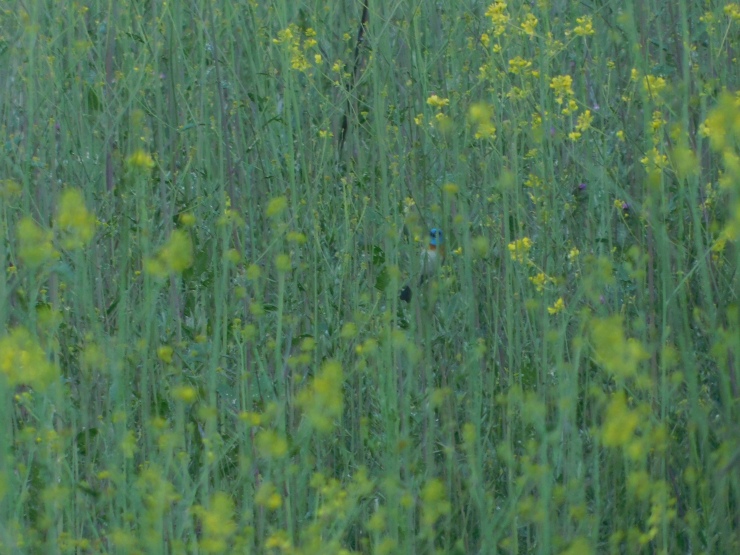
Next up is another blurry (but not as much) photo of a beautifully colored Lazuli Bunting in the grasslands at the end of White Canyon, my fifth lifer of the day. A challenge with this picture was that the bird was often hidden in the weeds and was also generally distant. He thankfully showed himself for a bit only I still couldn’t get any closer. Did you know that males of this species each make up their own unique songs? First year males will take parts of songs from other males and then rearrange them in their own way and will then use this song for life.

Next up is yet another blurry picture of a Pacific-Slope Flycatcher, my seventh lifer of the day. The bird was identifiable from the very similar but more local Hammond’s Flycatcher due to it’s generally larger bill, orange lower mandible (bottom half of the beak,) and overall more greenish coloring. Did you know that a subspecies of this bird in the Channel Islands may actually be a separate species? If so it will be become the second species endemic to the islands along with the Island Scrub-Jay.

Next up is a photo of a Spotted Towhee, whom we heard in great numbers but only saw a handful of times. Did you know that this bird and the Eastern Towhee where once considered the same species, the Rufous-sided Towhee?
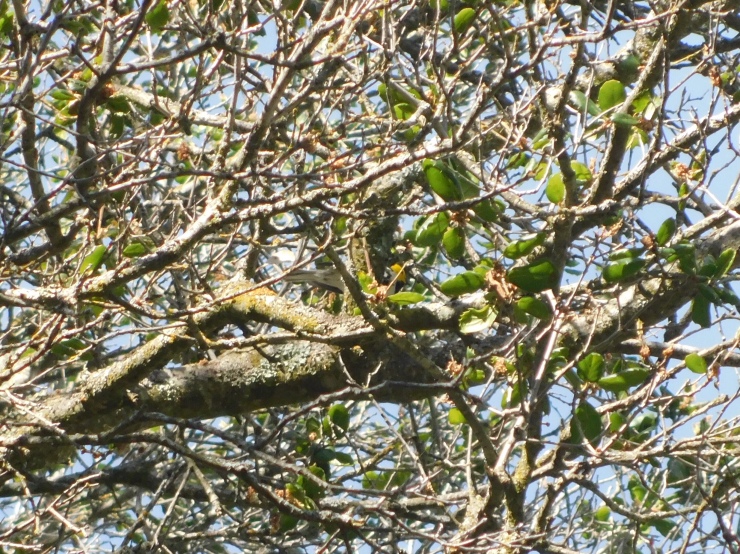
Our next photo is a proof picture of a Hermit Warbler, my tenth lifer of the day. He was identifiable from his similar cousin the Townsend’s Warbler due to his unstriped face and un-streaked, white breast. Here’s an interesting fact about them and their relationship with their cousin from All About Birds:
The Hermit Warbler hybridizes with the Townsend’s Warbler where their ranges overlap in Oregon and Washington. The hybrid zones are rather narrow and appear to be slowly moving, with the more aggressive Townsend’s Warbler displacing the Hermit Warbler.

Next up is a picture of my 9th lifer of the day, the Hammond’s Flycatcher. The bird is normally identifiable due to its small beak and dark lower mandible but in this photo that’s not possible due to the angle and because the lower mandible is in fact more yellow/orange (sometimes present in young birds.) Instead we must rely on their overall gray color versus the Pac Slopes more greenish color. Did you know that according to IBird this bird was named after William Alexander Hammond?

Our next photo is of a Black-throated Gray Warbler whom had found a tasty treat, one of my most numerous lifers of the day. A challenge with photographing these birds was that like warblers in general they moved around a lot and where often obscured. Thankfully this guy was a little more chill, slow, and close allowing for me to snap a few decent shots. Did you know that according to IBird like Killdeer these birds will pretend to have a broken wing to distract predators from their nest.
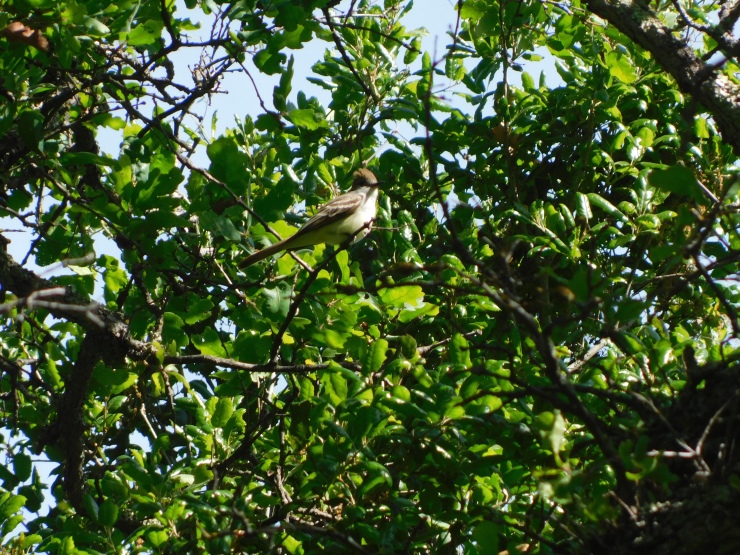
Next up is an Ash-throated Flycatcher, my third lifer of the day. A few minor challenges with photographing these birds was that the birds where often distant and in one case at the beginning of the day the camera wouldn’t focus, but these where easily overcome. Did you know that these birds don’t need to drink water? They get all their H2O from the food they eat!

Our last lifer from Mitchell Canyon was the Olive-sided Flycatcher photographed above. He was identifiable because when we first got their we could clearly see his greenish black “vest” and sharply contrasting, narrow white patch running down his front, a signature feature of this species. These characteristics can clearly be seen here in my friend Joachim’s post. Did you know that this species is very defensive of their nests? A pair was once observed knocking a squirrel from a branch and proceeding to chase it away! lol!

Next up is one member of the group of Wild Turkeys we encountered as we settled down for lunch in the parking lot. A minor challenge with this photo was that the birds where on the move away from us, but this guy soon paused long enough for a shot. Did you know that these birds can actually swim!?
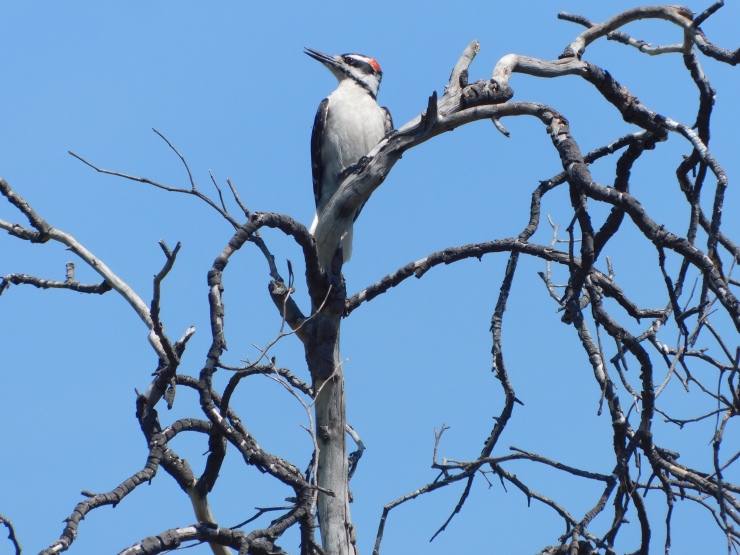
Our last photo from Mitchell Canyon is of this male Hairy Woodpecker whom I spotted while eating lunch. Did you know that these birds take advantage of some of their relatives? They’re known to look for grubs Pileated Woodpeckers had missed right after they leave and to drink sap from Sapsucker wells.
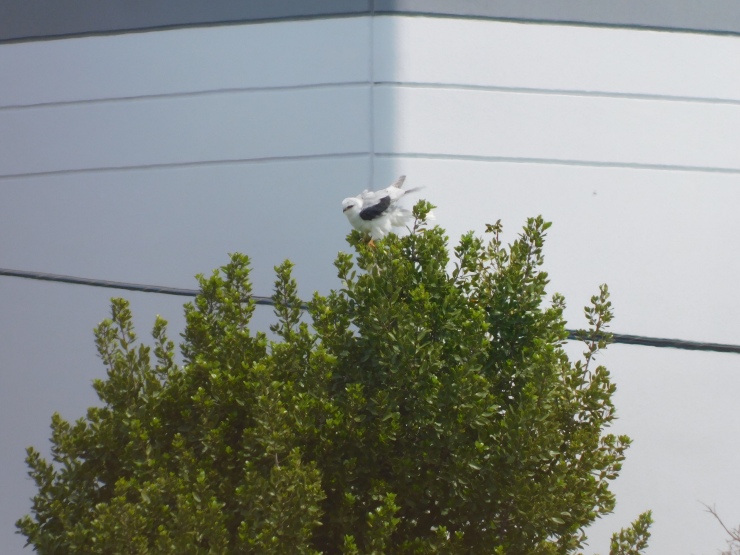
Our first photo from Hayward Marsh is of a White-tailed Kite who was ruffling his feathers. Did you know that a closely related old world species of this bird, the Black-shouldered Kite, looks pretty much identical?

Next up is a photo of a displaying Red-winged Blackbird. A challenge with this photo was that the bird only occasionally would display and the camera often wouldn’t focus. Fortunately I got a good shot on my first try. Want to watch an informational video about them? Here’s one I found about their breeding habits: How Nature Works: Red-winged Blackbird Display.
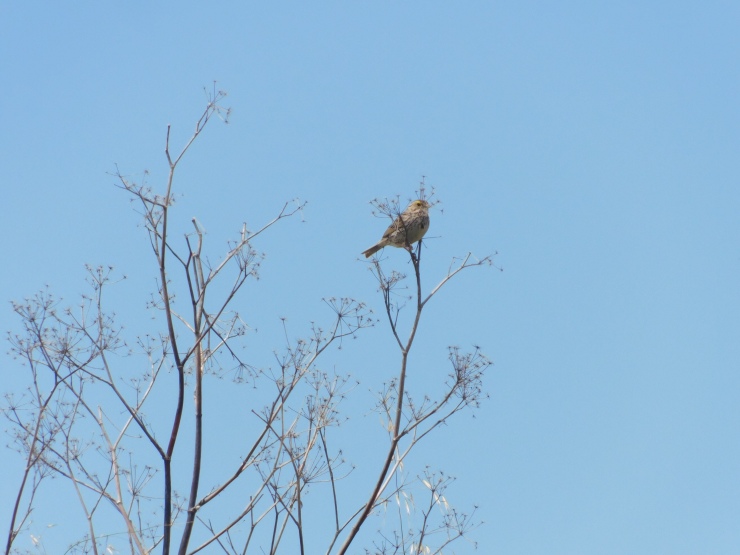
Next up I have a photo of a Savannah Sparrow perched in a dead weed. Did you know that nesting female Savannah Sparrows must eat ten times their body weight each day to support herself and her family!?

Next up is a pretty cool looking shot of a line of flying American White Pelicans. Did you know that these birds work together to catch fish? They’ll drive fish towards the shallows and then proceed to scoop them up.
Our next shot is the featured image of a Barn Swallow seemingly “screaming” at his companion on a bridge. A challenge with this photo was that the front bird was often preening, looking away, or stretching his wings. Even though the problem persisted the back birds expression totally made up for the problem. Did you know that the North American population of this bird used to regularly nest in caves, but now only one population in the Channel Islands does so?

Next up is a shot of my 12th lifer of the day, a Ruddy Turnstone whom a group member spotted as we where approaching a large flock of shorebirds. A minor challenge with this photo was that the bird was fairly distant at first, although it was fairly easy to get closer. Did you know that these birds can fly up to 50 mph!?
This post was getting WAY too long and so due to time constraints I decided to cut out the remaining two photos. Thanks for reading my post and I hope you enjoyed the pictures I took! I’ve been getting quite backed up on posts to do lately and have 1 or 2 to do currently. Look out for my next adventure featuring the birds of Yolo Bypass! Again I hope you enjoyed my post and I’ll see you all soon!
© Nicolas Forestell, if seen elsewhere it has been stolen from https://sfbirdshelter.wordpress.com/